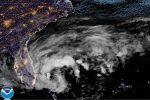Debate about the future of shortwave broadcasting focuses on the correct observation that shortwave listening is no longer a mainstream activity in most of the world.
The future of shortwave broadcasting — “Shortwave 2.0” — will not involve any revival of those large audiences. Instead, it will be an activity of communications enthusiasts and professionals. They would comprise a reserve corps able to relay information to larger populations in their countries when newer media are blocked or otherwise become unavailable.
The beginning of the end of “Shortwave 1.0” was described in “Shortwave Broadcasting Begins Its Long Slow Fade,” an article I wrote in the 1995 World Radio TV Handbook. I noted the elimination, in the post-Cold-War media environment, of shortwave broadcasts in some languages, as well as some entire transmitting sites, e.g. Trans World Radio on Bonaire and Far East Broadcasting Company in California (KGEI). In my (then) role as audience research analyst at the Voice of America, I listed examples of declining shortwave audiences.
The really big chunk fell from the shortwave glacier six years later, when BBC World Service ended its English broadcasts to North America. In the following years, other international broadcasters followed, first dropping shortwave to North America, and eventually to other parts of the world. The aforementioned 1995 World Radio TV Handbook listed 27 European countries with English broadcasts on shortwave to North America. Now only Radio Romania International has shortwave English to North America.
Read more – RadioWorld:










More Stories
via Amateur Radio Daily: SAQ Grimeton to Air United Nations Day Message
A Cold War-Era Russian Radio Transmitter Just Broadcast a New Encrypted Message, No One’s Been Able to Decipher
via Hackaday: The VLF Transformation